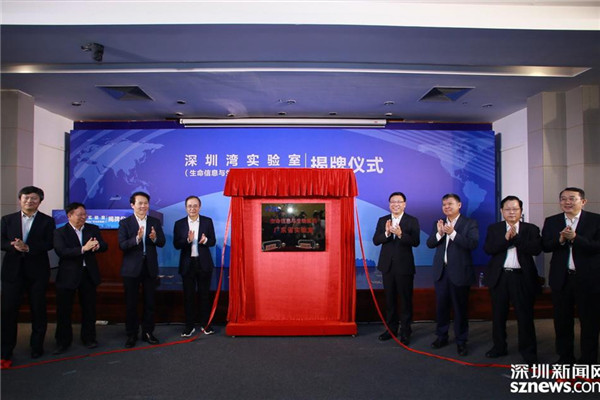Bio-science lab opens
Shenzhen Bay Laboratory, a research lab focused on life information and bio-pharmacy, was inaugurated at the National Super Computing Shenzhen Center recently.

This is the second Guangdong laboratory to be initiated by the city, following Pengcheng Laboratory, which is focused on science and technology in the Internet sector.
The lab was jointly organized by the Shenzhen government and Peking University Shenzhen Graduate School. The lab is operated through its direct subsidiary, Shenzhen Research Institute of Health Science, and cooperates with eight universities, including Shenzhen University, SUSTech, CUHK Shenzhen, Tsinghua University Shenzhen Graduate School, Harbin Institute of Technology (Shenzhen) SIAT, Shenzhen BGI Life Science Research Institute and Shenzhen Digital Life Research Institute.
This lab will be organized and built in line with the international leading standard and will strive to become a national laboratory centered around the goal of constructing an international innovation center in the Guangdong-Hong Kong-Macao Greater Bay Area.
“The laboratory will make full use of the life science research resources of Peking University and the Greater Bay area, and focus on studying cancers, metabolic diseases, cardiovascular diseases, neurodegenerative diseases and developing researches in life information, pharmacy and medical engineering,” said Zhan Qimin, head of the laboratory, who is also an academician of the Chinese Academy of Engineering.
The laboratory will attract global talents, and emphasize innovation, originality and scientific achievement transformation. It will try to serve as an influential base in life science and bio-pharmacy.
The bio-pharmacy and life science industries are strategic and newly emerged industries that Shenzhen has begun emphasizing.
According to Wang Lixin, vice mayor of Shenzhen, the two industries have developed rapidly in the city. The city’s high-end bio-medical engineering, genome sequencing, bio-information analysis and cell therapy are now among the top in the world.